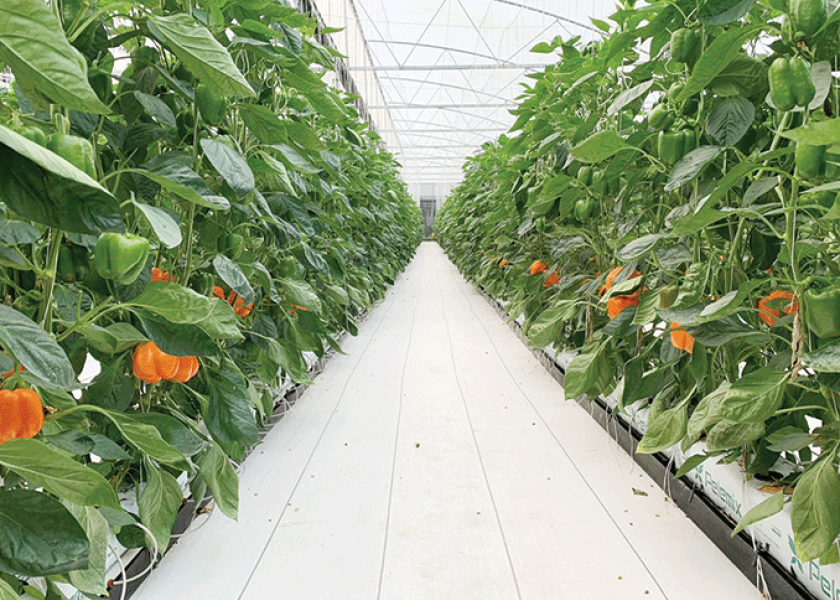Mexican greenhouse production soars

Every year, Mexican producers are growing more of their product under protected agriculture.
As of 2017, there were 9,083 acres of greenhouse production in Mexico, said Gary Hickman, a retired greenhouse horticultural adviser for the University of California, Davis, who now operates Cuesta Roble Consulting in Mariposa, Calif.
And, as of 2018, there were 57,454 acres of produce grown under protected agriculture, such as shade houses, in Mexico, he said.
Greenhouses can boost yields and enable growers to control variables like heating, cooling, humidity and irrigation and provide a barrier against pests, said Ricardo Crisantes, chief commercial officer for Nogales, Ariz.-based Wholesum.
“It’s great technology,” he said.
The company plans to add a 6-acre greenhouse facility in Amado, Ariz., this summer, he said.
Crisantes sees potential for greenhouse-grown snacking tomatoes and small-sized cucumbers, like 6-inch mini cucumbers and 3-inch snacking cucumbers.
“We see a lot of growth there,” he said.
All of the cucumbers, vine-ripe tomatoes and bell peppers and 80% of the roma tomatoes grown for Nogales-based Chamberlain Distributing Inc. are grown under protected agriculture, said Jaime Chamberlain, president.
In all, he estimated that 60% of the company’s volume is grown under protected agriculture.
Ten years ago, the figure was about 10%.
Chamberlain Distributing strives to offer its customers “consistency and reliability,” Chamberlain said.
He said he wants to be able to sign a contract and adhere to that contract throughout the period that the product is available.
Protected agriculture enables growers to offer customers consistently high-quality products in a reliable manner, Chamberlain said.
“Protected agriculture gives you one more layer of consistency and reliability with all the different changes in climate that we’re seeing,” he said.
Customers feel more confident about signing longer-term contracts when they know their product will be grown in greenhouses or shade houses, he said.
Protected agriculture enables growers to start their season earlier and to extend their harvest, Chamberlain said.
He said it’s likely that many of the products now grown in open fields will be produced under protected agriculture in the near future.
There has been continuous growth in protected agriculture in Mexico because that way of growing enables farmers to produce high-quality, flavorful tomatoes, peppers, cucumbers and any products that demand intensive labor, like grape tomatoes and mini — or Persian — cucumbers as well as organic items, said Fried DeSchouwer, president of Greenhouse Produce Co. LLC, Vero Beach Fla.
“There is a continuous shift from outdoor production to protected culture (in Mexico),” he said.
“You’re looking at protecting your investment and limiting or reducing your risk,” DeSchouwer said.
And that is being accomplished throughout the world by applying protective culture technology, like greenhouses, shade houses and vertical growing methods, he said.
“The world needs that,” he said. “It’s a must.”
None of the Mexican-grown vegetables, including cucumbers and bell peppers, from Rio Rico, Ariz.-based Ciruli Bros. LLC are grown in open fields anymore, said Chris Ciruli, partner.
It’s more cost effective to grow in protected agriculture in Mexico, Ciruli said.
“You have more control, it’s a better harvest, and it’s a better crop.”
The trend toward growing cannabis in the U.S. also has contributed to the growth of greenhouses and shade houses in Mexico, DeSchouwer said.
“Mexico plays big role in replacing or complementing greenhouse vegetables in the U.S. and Canada,” he said, as U.S. and Canadian growers abandon vegetables and switch over to growing more profitable cannabis.
“It’s creating an opportunity for Mexican growers to fill that gap,” he said.







